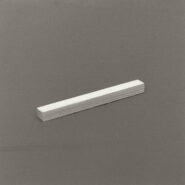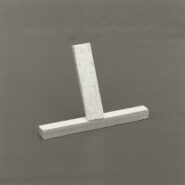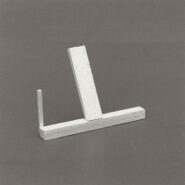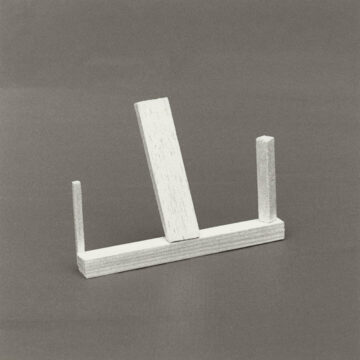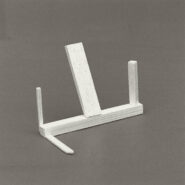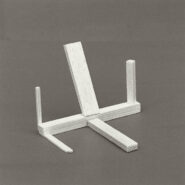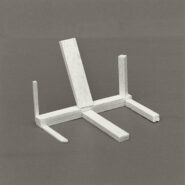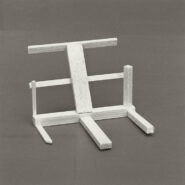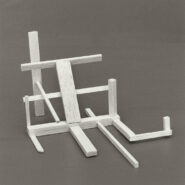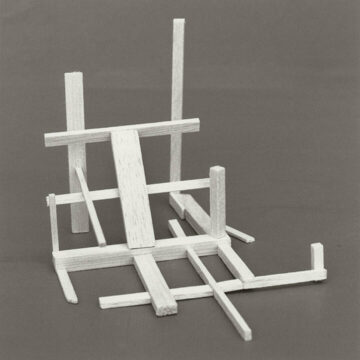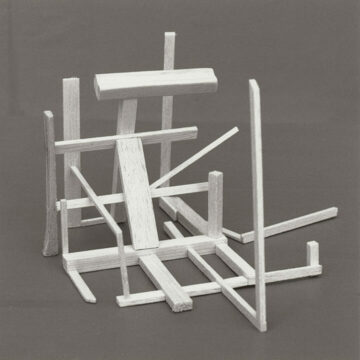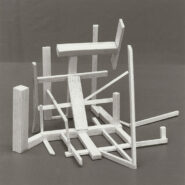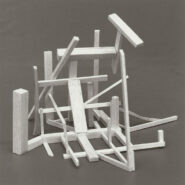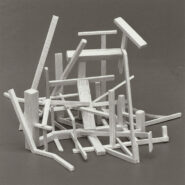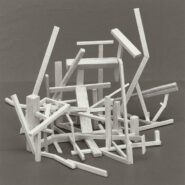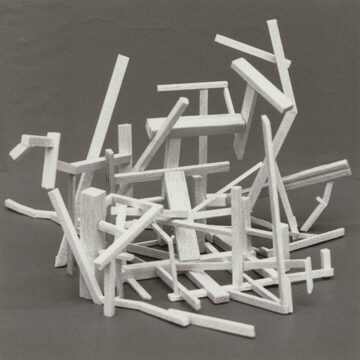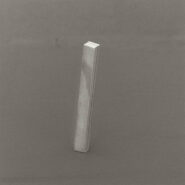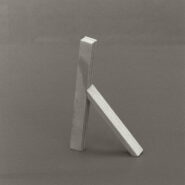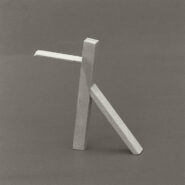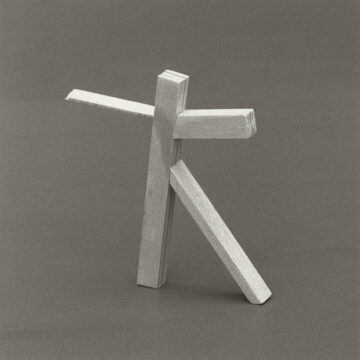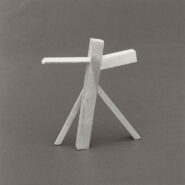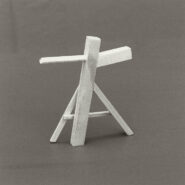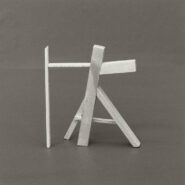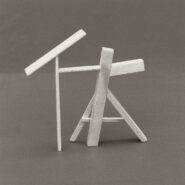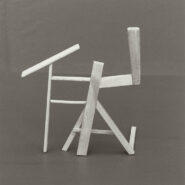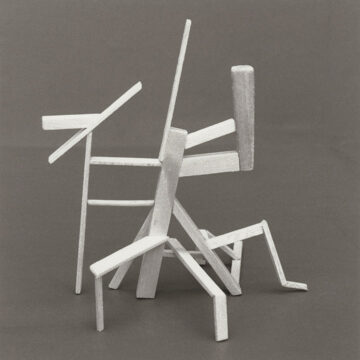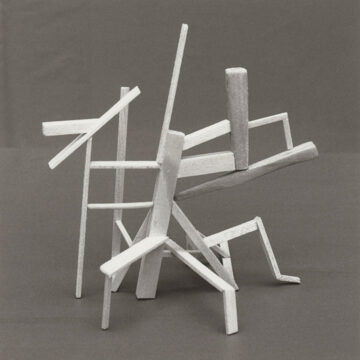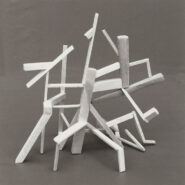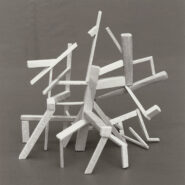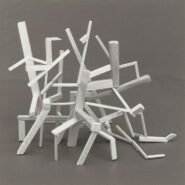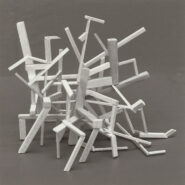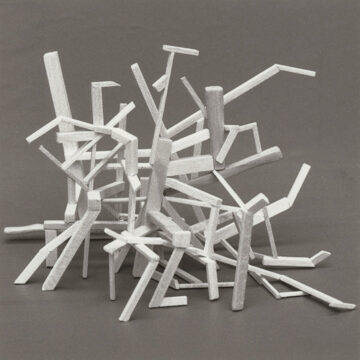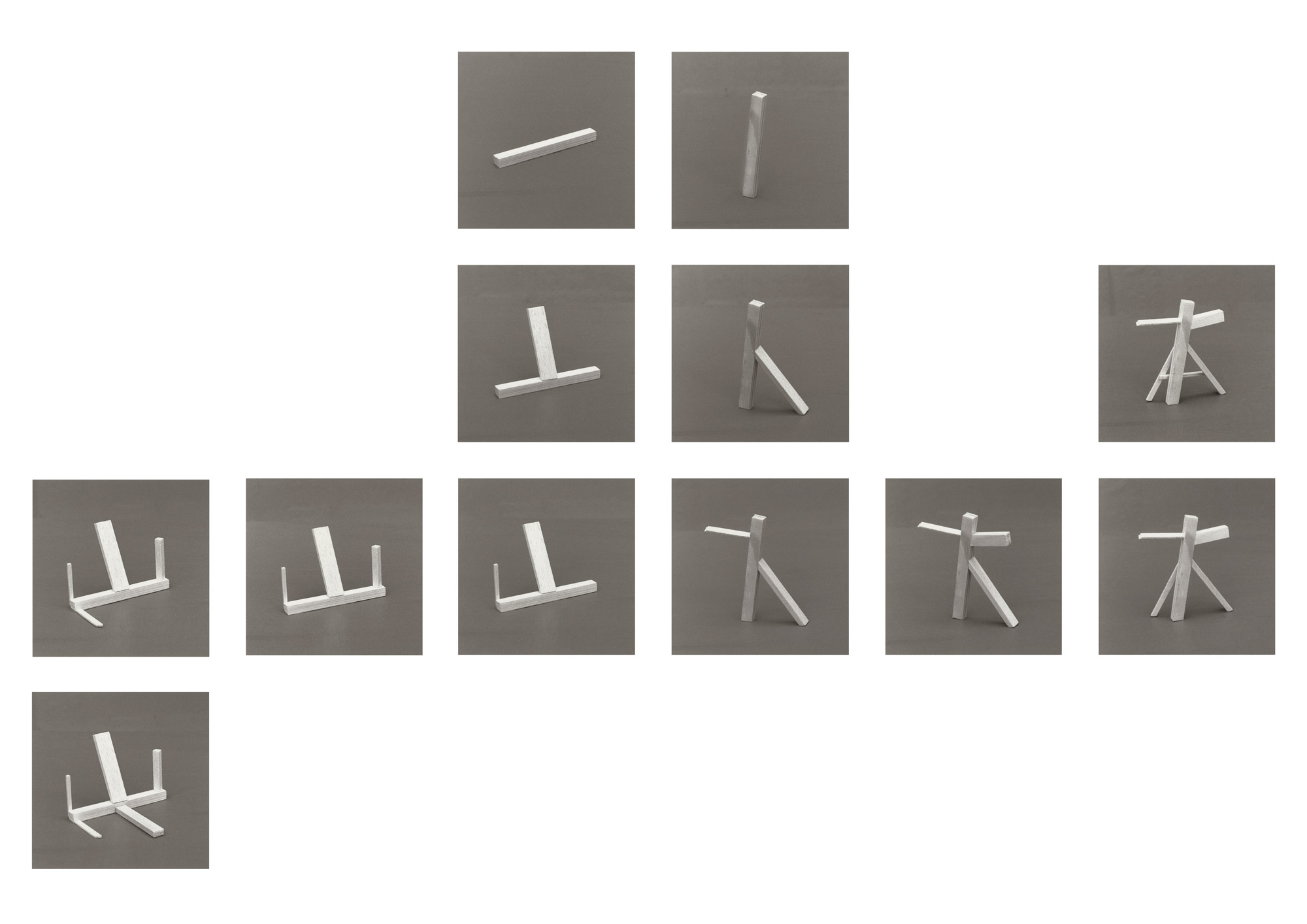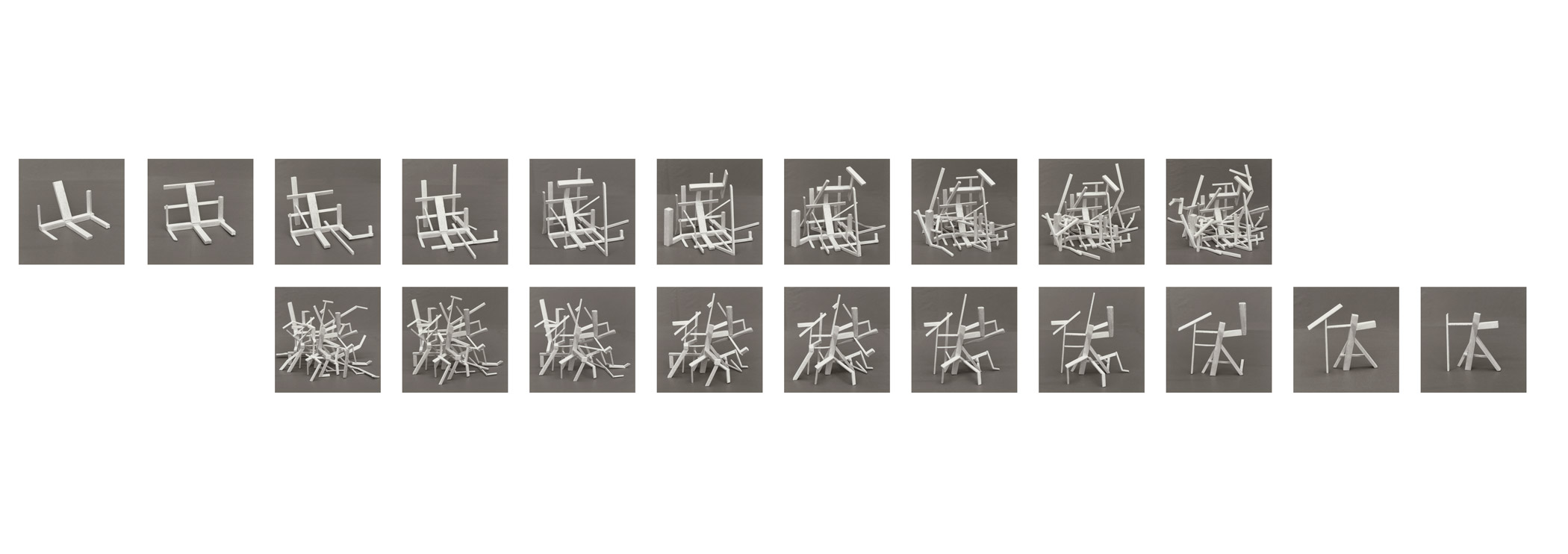Twin Birds
2021, Gelatin silver print on fiber base paper.
Two related objects. What is a process?
Am I a maker? Or a photographer?
It seems to me I am always caught in the middle.
In the beginning, I had two pieces of wood 120 of the same length. Like twins.
I gave them a name. One is called “Red”, the other one is called “Blue”. Then, I made Red stand and Blue lie down.
And I took a picture of them. First photo of the twins’ birth. This is the starting point.
Then I put another piece of wood, as an addition to each one of them and I start to realize that they look different. I take one more picture. Then again, I add a third piece of wood to each, I take a new photo and so on. Change occurs as a result of continuous and simultaneous repetition.
The simple piece of wood from the origins creates a more and more complex structure.
The two objects start to differentiate from one another. Transition of an object to another is accom- plished by the rigorous process of reiteration.
There is no established plan, as there would have been one for an architectural structure or a sculpture. There is no prior concept, nor state
of completion either. In other words, I have no idea where this is going. Chance binds itself to chance in order to move forward indefinitely.
Which image is superimposed then?
Writings? Some characters? Some animals? Some constructions? Does growing up in a culture with an ideogrammatic writing style naturally induced the pieces of wood I work with to become written Chinese characters (hanzi)?
The standing piece of wood stands for 1 in Arabic numeral. The lying piece of wood stands for 1 in hanzi. I recognize hanzi in the objects that appeared then: 人 (a person), 大 (big), 上 (above), 中 (middle), 山 (mountains), 木 (a tree), 本 (a book, or the origin), 体 (the body)…
There is no definitive way of presenting this body of work. The collection of photographs is a simple database. How to display them? Their installation itself is a process.
Yuki Onodera
